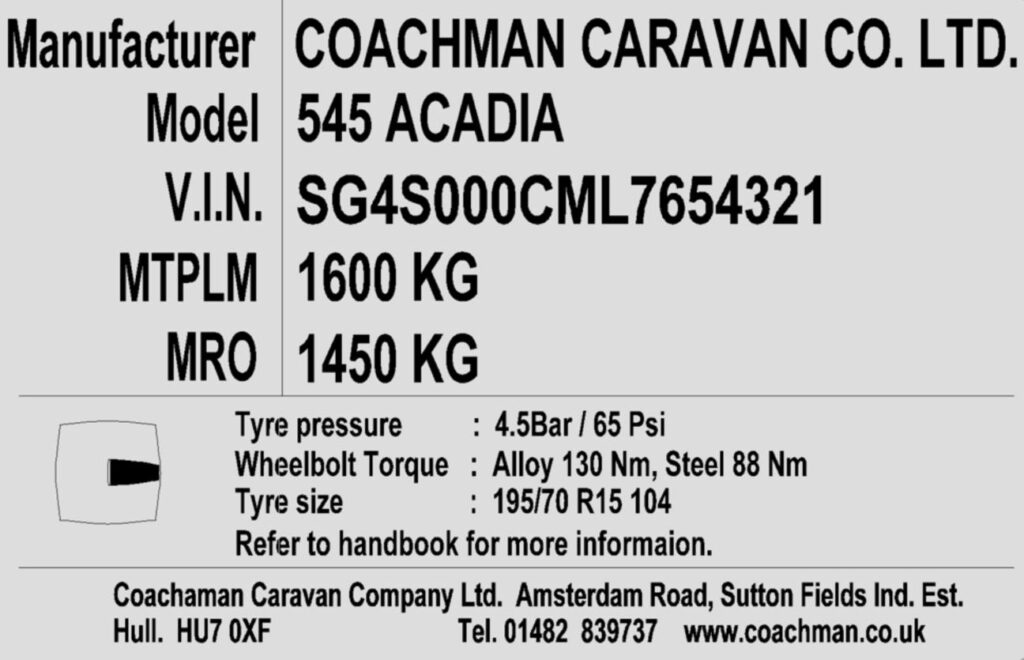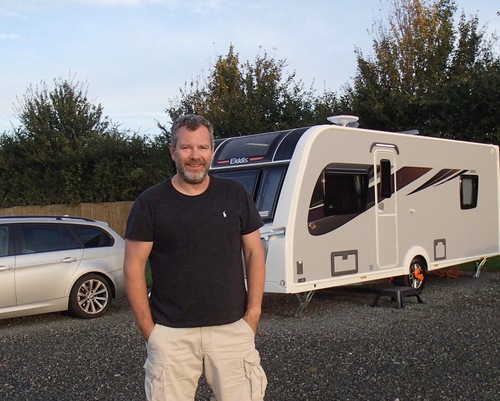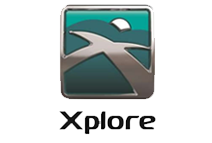Almost every element of caravanning involves weight considerations. This crucial factor affects your tow car, packing, licences, manoeuvring, additional equipment, and much more. Our comprehensive caravan weights guide explains all.
Knowing your tow car and caravan weights, and how they impact your towing, is all important.
The key things to know about this are:
- Your caravan MiRO, MTPLM and Payload figures
- The 85% rule (for towing novices) and 100% rule (for experienced tow car drivers)
- Noseweight
- Driving licence provisions
We’ll start this guide by explaining what the most important weights in caravanning are.
Mass In Running Order (MiRO/MRO)
MiRO is the empty weight of the van in kilogrammes when it leaves the factory. I say ‘empty’, but it includes the following:
- the weight of one gas bottle
- flush water
- and an amount of freshwater stored in any onboard tank.
Surprisingly, it doesn’t include the weight of a leisure battery, even though they can weigh more than 12kg.
Find the MiRO weight and other details on the weight plate near the caravan door in modern tourers.
Maximum Technically Permissible Laden Mass (MTPLM)

The ‘Maximum Technically Permissible Laden Mass’ is the heaviest weight at which you can safely tow your caravan. The weight plate displays the weight in kilogrammes. For most caravans, the MTPLM falls between 1000kg (for lightweight two-berth caravans) and 2000kg (for larger, luxurious family tourers).
As well as the weight of the caravan, the MTPLM encompasses all items inside or attached to your caravan. These items include the leisure battery, flush water, clothing, foodstuffs, awnings, motormovers, and air conditioning units, etc. When weighing your holiday tourer, it should be lighter than the maximum weight allowed for your van.
In fact, the MPTLM figure isn’t a legal limit. Factors like axle and tyre ratings determine its basis. Exceeding it could invalidate your warranty and insurance.
A police check could result in authorities charging you for careless driving, towing a dangerous load, or breaking a general law. Overloading a caravan can significantly alter its towing performance and safety.
Payload
Payload refers to the weight of items you can load into your tourer before exceeding its weight capacity. To calculate the allowable payload, simply subtract the Mass in Running Order (MiRO) from the Maximum Technically Permissible Laden Mass (MTPLM).
This will give you the weight in kilogrammes of contents that you can safely carry in your caravan when towing.
- clothes
- food
- gadgets
- toys
- books
- games
- sports equipment
- awnings
- camping furniture
- your water carriers
- and other accessories.
For instance, in the weight plate image, the MTPLM of the Coachman 630 Vision caravan is 1701kg. While the MiRO is 1531kg, leaving a potential payload of 170kg.
The weight of clothes and food may seem like a lot. But there are other things to consider.
These include leisure batteries, motor movers, satellite dishes, bedding, footwear, televisions, and awnings. These items can add significant weight to the van.
Noseweight 
The noseweight is the force that pushes down on the towball. This happens when you lift the jockeywheel and corner steadies of the caravan.
Noseweight is measured in kilogrammes and should ideally be between 5% to 7% of the fully-laden weight of the caravan. For example, a 1500kg caravan should exert a downward force of 75kg to 105kg on the hitch.
Noseweight limits are also specified by the tow car and the towbar manufacturers, and should not be exceeded.
Typically, a towbar has a weight limit of around 80kg to 110kg. Refer to your car’s manual for specific details. Some car towbars only have a weight limit of 50kg. These models are not suitable for towing a caravan
You measure the noseweight of a caravan using a noseweight gauge, a specialist scale which you place between the caravan hitch and the ground. When you raise the jockey wheel, the gauge supports the weight on the nose of the caravan, allowing you to read the weight measurements.
Make sure that the gauge meets the BS7961 standard. A 130kg model can be purchased from Milenco for £43.52.
Alternatively, you could place bathroom scales on the ground under the hitch and place a piece of strong wood in between the hitch cup and the scales.

As you carefully wind up the jockeywheel, you’ll see the weight on the scales increase, until the jockeywheel is off the ground. At this point, you can read the noseweight.
Achieving the correct noseweight should result in the caravan having a slightly nose-down angle. This delivers optimal stability and aerodynamic effect while towing.
Reading a car’s weightplate
Usually, a vehicle’s weightplate is found inside one of the front door jambs.
Typically, they display four weights. From the top these are:
Gross Vehicle Weight (GVW) aka Maximum Allowable Mass (MAM)
These terms describe the same thing: the maximum weight of a vehicle for safe driving. It includes all contents, luggage, fuel and passengers. Driving above this weight is likely to cause damage and produce an unsafe drive.
GVW is the weight used when working out the total mass of a caravan outfit for B+E purposes. Do not use the kerb weight for this calculation.
Usually, GVW is around 400kg more than the kerbweight. My tow car, for example, has a kerbweight of 1730kg and a GVW/MAM of 2115kg. That means I can carry 385kg of people and luggage. Get to know your car’s kerbweight.
Gross Train Weight (GTW)

This describes the combined maximum allowable mass of the tow vehicle and trailer.
It’s the combined weight of the tow car’s GVW and the caravan’s MTPLM. It’s shown on the data plate in the picture as 3790kg.
To find the weight of the maximum allowable caravan weight, you subtract the GVW figure from it. In this case, a caravan weighing up to 1675kg could be towed.
Front and rear max axle loads (respectively)
Here, the front axle can carry 945kgs and the rear axle 1180kgs.
Kerbweight
Your tow car’s kerbweight is used to assess your 85% and 100% tow-match status.
It denotes the weight of the tow car with all standard equipment and a full tank of fuel – but no driver, passengers, or cargo.
You can find your tow car’s kerbweight figure in the owner’s manual, on the manufacturer’s website, on your V5 registration document (G Mass in Service – XXXXKG) and sometimes on the car’s weightplate.
Kerbweight shouldn’t be confused with other weights like Gross Vehicle Weight (GVW) and Maximum Authorised Mass (MAM).
The 85% and 100% towing rules

The NCC, both major caravan clubs, and a number of industry experts came together to develop the 85% rule, guidance which is designed to provide safer towing on Britain’s roads.
While not a law, the advice is eminently sensible and infringing it could cause problems in the event of an accident or insurance claim.
The 85% rule states that novice caravanners should only tow caravans that weigh no more than 85% of the kerbweight of the tow car.
As an example, if your tow car weighs 1600kg, a novice caravanner can safely and sensibly tow a tourer with an MTPLM weight of up to 1360kg. (1360 is 85% of 1600).
Conversely, if you’ve bought a caravan with an MTPLM of 1450kg, you’ll need a tow car weighing at least 1705kg.
Once the caravanner has racked up a few towing miles and become a confident tow car driver, this limit is raised to 100%. That means the same 1600kg tow car can safely pull a caravan with an MTPLM weight of 1600kg.
Under no circumstances should you tow a caravan that is heavier than the tow car.
These rules may contradict other guidance on the tow vehicle’s weighplate or in the manual, but these figures are accepted across the industry as safe and sensible.
Our graph below shows the suggested minimum kerbweights for a number of caravans with different MTPLM figures.
Minimum Towcar Kerbweights’ Guide
| Caravan MTPLM | Min Kerbweight Novice (85%) | Min Kerbweight Experienced (100%) |
| 750kg | 882kg | 750kg |
| 1000kg | 1176kg | 1000kg |
| 1250kg | 1470kg | 1250kg |
| 1500kg | 1764kg | 1500kg |
| 1750kg | 2058kg | 1750kg |
| 2000kg | 2352kg | 2000kg |
Knowing your car’s towing limit and towing weight capabilities are important factors to grasp.
Packing a caravan

Imagine your tourer is a seesaw with the axle as the fulcrum. The more weight you load towards the front of the caravan, the greater the weight pressing down on the towbar. Conversely, if you load weight further back behind the axle, that will push the rear of the caravan downwards and lighten the load on the towbar.
The aim is to create a modest amount of downforce on the towbar, typically between 70kg and 120kgs. This keeps the rear end of the tow car ‘planted’ improving traction and control, and the front of the van slightly nose down, which is most stable for towing.
It also creates a safer tow, as it’s less likely to induce any snaking in the caravan. Loading significant weight towards the back of a tourer can create a ‘pendulum effect’, which means that, once the caravan starts swaying, that snaking effect can be hard to bring under control.
Watch this short video to see the dramatic effects of poor loading: https://bit.ly/3wkAbjM
Loading your caravan correctly is an important aspect of safe towing.
Pic 11
The safest way to pack a caravan is to keep all heavy items down at floor level and as close to the axle as possible. That way, you get less see-sawing effect, and a smoother towing experience.
If you have a rear island bed with lots of storage space beneath, don’t be tempted to tow with heavy items stored there.
To lighten your caravan, put heavy things like awnings and wheel locks in the boot of your tow car. Or use a roof box mounted on your roof rails.
When packing a caravan for the first time, use a noseweight gauge to make sure your packing has a suitable noseweight. You can tweak it by moving contents around inside your van, for example, by putting something substantial in the front gas locker.
Replating your caravan for extra weight allowance

Caravans have two MTPLM figures. There’s a minimum weight for standard caravans, but there’s also a maximum weight limit. The caravan’s structure including its chassis and axles, define this upper limit.
Some caravanners find that after adding several devices, maybe a motormover and air conditioning, they have severely limited their payload. In this instance, they can pay the manufacturer or dealer to replate their tourer to the upper limit.
For example, a tourer might have a payload of 140kg, but the owners add a motormover, a solar panel, a second gas bottle, and air-conditioning. This eats up 80kg of payload allowance, leaving them only 60kg to play with.
As the chassis and axles have some leeway in their design, their caravan can be replated, raising its MTPLM by between 40 and 70kg. This gives owners plenty of payload allowance to continue their luxury touring lifestyle.
Expect to pay £50 to £100. Bailey, for example, charges £65 for many van weightplate upgrades.
B+E driving licence category
B+E is a driving licence category that allows the holder to operate an outfit with a combined weight (Gross Train Weight) of up to 8250kg, as long as the trailer MAM doesn’t exceed the weight of the unladen vehicle.
Before 16th December 2021, laws surrounding the B+E licence category limited many drivers’ tow car choices. The rules in Britain changed. Now, anyone with a UK driving licence can tow a trailer/caravan weighing up to 3500kg maximum authorised mass (MAM).

This law change is a boon for younger caravanners who passed their driving tests after 1st January 1997, and previously had to take a tricky and expensive extra driving test to tow a heavier tow car/caravan combo.
This law change doesn’t apply in Northern Ireland, so the B+E test is still required there for those who passed their driving test after 1st January 1997.
The DVLA has revised its database with the new categories, and B+E will be added to driving licences when they are renewed.
What happens if my caravan’s too heavy?
Towing an overweight caravan is dangerous and doing so could put you and other road users at risk. Towing dangerously is frowned upon. From time to time the police will install temporary ‘weigh stations’ at services on busy holiday-route motorways.
For example, Wiltshire police recently pulled over 100 outfits and found 13 of them to be infringing the law on the M4. These drivers received fixed penalty fines, but also had to sort out excess weight issues there and then. Not a great start to any holiday!
The author
John Sootheran is a seasoned caravan and motorhome journalist who previously edited Caravan magazine, and now writes for Britain’s best-selling caravan magazine, Practical Caravan, along with Practical Motorhome and the Camping & Caravanning Club magazines. He also works with a number of major caravanning brands.






